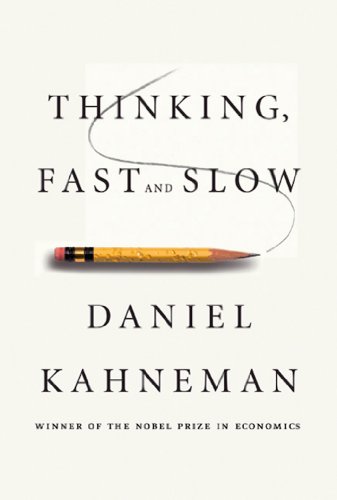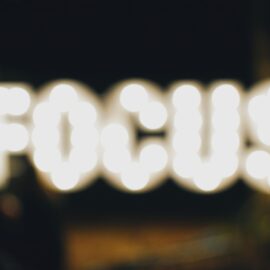

This article is an excerpt from the Shortform summary of "Thinking, Fast and Slow" by Daniel Kahneman. Shortform has the world's best summaries of books you should be reading.
Like this article? Sign up for a free trial here .
What is “slow thinking?” How can you use it to become a better thinker and make better decisions?
Slow thinking is when you allocate attention to the effortful mental activities that demand it, including complex computations. It’s often associated with the subjective experience of agency, choice and concentration.
We’ll cover what slow thinking is and how to use it to make better decisions.
Slow Thinking v. Fast Thinking
In Thinking, Fast and Slow, Kahneman defines two systems of the mind:
Fasting Thinking (System 1): operates automatically and quickly, with little or no effort, and no sense of voluntary control
- Fast Thinking Examples: Detect that one object is farther than another; detect sadness in a voice; read words on billboards; understand simple sentences; drive a car on an empty road.
Slow Thinking (System 2): allocates attention to the effortful mental activities that demand it, including complex computations. Often associated with the subjective experience of agency, choice and concentration
- Slow Thinking Examples: Focus attention on a particular person in a crowd; exercise faster than is normal for you; monitor your behavior in a social situation; park in a narrow space; multiple 17 x 24.
A Lazy System 2 (Slow Thinking) Accepts the Errors of System 1
Consider these questions, and go through them quickly, trusting your intuition.
1) A bat and ball cost $1.10. The bat costs one dollar more than the ball. How much does the ball cost?
2) How many murders happen in Michigan each year?
3) Does the conclusion from the premises?
- All roses are flowers.
- Some flowers fade quickly.
- Therefore, some roses fade quickly.
Ready to see the answers?
1) The answer is $0.05. The common intuitive (and wrong) answer is $0.10.
2) The trick is whether you remember that Detroit is in Michigan. People who remember this estimate a number that is much higher (and more accurate) than those who forget.
3) The answer is no—all roses may not fit into the subcategory of flowers that fade quickly.
===
All of your answers, if you really spent time on it, could be verified by deliberate, slow thinking. In the first question, it’s easy to see that if the ball cost $0.10, the total would be $1.20, which is clearly incompatible with the question. For the second question, if you had to enumerate the major cities of Michigan, you would likely list Detroit.
For some people, spending enough time would be sufficient to get the answers right. But many people, even if given unlimited time, might not even think to apply slow thinking to question their answers and find different approaches to the question. Over 50% of students at Harvard and MIT gave the wrong answer to the bat-and-ball question; over 80% at less selective universities.
This is the insidious problem of a “lazy System 2,” or lazy slow thinking. System 1 surfaces the intuitive answer for slow thinking to evaluate. But a lazy System 2 doesn’t properly do its job – it accepts what System 1 offers without expending the small investment of effort that could have rejected the wrong answer.
Even worse, this aggravates confirmation bias. A piece of information that fits your prior beliefs might evoke a positive System 1 feeling, while your slow thinking might never pause to evaluate the validity of the piece of information. If you believe a conclusion is true, you might believe arguments that support it, even when the arguments are unsound.
It’s useful then to distinguish between intelligence and rationality.
- Intelligence might be considered the full computational horsepower of a person’s brain.
- Rationality is resistance to mental laziness; not accepting a superficially plausible answer; being more skeptical of intuitions; tending to put in the hard work of checking the logic; and thus immunity to biases.
In other words, a powerful system 2 of slow thinking is useless if the person doesn’t recognize the need to override their system 1 response.
The theme here, that will recur through the book, is that people are overconfident and place too much faith in their intuitions. Further, they find cognitive effort unpleasant and avoid it as much as possible.
Slow Thinking Has a Maximum Capacity
Slow thinking has a limited budget of attention – you can only do so many cognitively difficult things at once.
This limitation is true when doing two tasks at the same time – if you’re navigating traffic on a busy highway, it becomes far harder to solve a multiplication problem.
This limitation is also true when one task comes after another – depleting slow-thinking resources earlier in the day can lower inhibitions later. For example, a hard day at work will make you more susceptible to impulsive buying from late-night infomercials. This is also known as “ego depletion,” or the idea that you have a limited pool of willpower or mental resources that can be depleted each day.
All forms of voluntary effort – cognitive, emotional, physical – seem to draw at least partly on a shared pool of mental energy.
- Stifling emotions during a sad film worsens physical stamina later.
- Memorizing a list of seven digits makes subjects more likely to yield to more decadent desserts.
Slow Thinking: Differences in Demanding Tasks
The law of least effort states that “if there are several ways of achieving the same goal, people will eventually gravitate to the least demanding course of action.”
What makes some cognitive operations more demanding than others? Here are a few examples:
- Holding in memory several ideas that require separate actions (like memorizing a supermarket shopping list). System 1 is not capable of dealing with multiple distinct topics at once.
- Obeying an instruction that overrides habitual responses, thus requiring “executive control.”
- This covers cognitive, emotional, and physical impulses of all kinds.
- Switching between tasks.
- Time pressure.
In the lab, the strain of a cognitive task can be measured by pupil size – the harder the task, the more the pupil dilates, in real time. Heart rate also increases.
Kahneman cites one particular task as the limit of what most people can do in the lab, dilating the pupil by 50% and increasing heart rate by 7bpm. The task is “Add-3”:
- Write several 4 digit numbers on separate index cards.
- To the beat of a metronome, read the four digits aloud.
- Wait for two beats, then report a string in which each of the original digits is incremented by 3 (eg 4829 goes to 7152).
If you make the task any harder than this, most people give up. Mentally speaking, this is sprinting as hard as you can, whereas casual conversation is a leisurely stroll.
Because slow thinking has limited resources, stressful situations make it harder to think clearly. Stressful situations may be caused by:
- Physical exertion: In intense exercise, you need to apply mental resistance to the urge to slow down. Even a physical activity as relaxed as taking a stroll involves the use of mental resources. Therefore, the most complex arguments might be done while sitting.
- The presence of distractions.
- Exercising self-control or willpower in general.
Because of the fixed capacity, you cannot will yourself to think harder in the moment and surpass the “Add-3” limit, even with a gun to your head. In the same way, you cannot sprint any faster than you can possibly sprint.
How to Make Difficult Tasks Easier
But there are some ways to make a mentally demanding task of slow thinking easier:
- Get more skilled. The more skilled you get at a task, the less energy it consumes. Thus experts can solve situations that require far more intense work for novices (such as diagnosing a disease for doctors, or making a chess move for a grandmaster).
- In a state of flow, you can concentrate energy without having to exert willpower, thus freeing your entire mental faculty to the task. Flow has been described as one of the most enjoyable states of life.
- (Shortform note: flow theory suggests three conditions have to be met to get into flow: 1) Clear set of goals and progress. 2) Clear and immediate feedback, to adjust your performance to maintain flow. 3) Good balance between perceived challenges and perceived skills – a confidence in your ability to complete the task.)
- Get incentives for your behavior. When given proper incentives, people resisted ego depletion.
- Eat. Consuming more glucose seems to undo ego depletion, since cognitive effort depletes blood glucose.
- A well-known study of Iraeli judges showed that, after meals, the judges were more lenient about awarding parole to prisoners.
- Playing computer games requiring attention and control may improve executive control and intelligence scores.
When slow thinking is taxed, it has less firepower to question the conclusions of System 1.
———End of Preview———

Like what you just read? Read the rest of the world's best summary of "Thinking, Fast and Slow" at Shortform . Learn the book's critical concepts in 20 minutes or less .
Here's what you'll find in our full Thinking, Fast and Slow summary :
- Why we get easily fooled when we're stressed and preoccupied
- Why we tend to overestimate the likelihood of good things happening (like the lottery)
- How to protect yourself from making bad decisions and from scam artists






